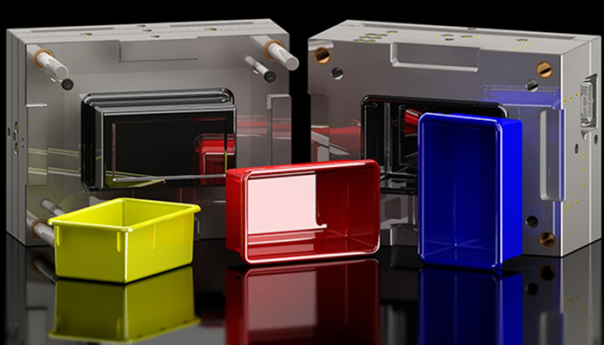Understanding the Factors Affecting Injection Moulding Costs
Injection moulding is a widely used manufacturing process for producing plastic products on a large scale. It involves injecting molten plastic material into a mould cavity, which is then cooled and solidified to form the desired shape. While injection moulding offers several advantages such as high production efficiency and design flexibility, the cost of the process is a crucial aspect that needs to be understood and managed effectively. In this article, we will delve into the various factors that affect injection moulding costs.
1. Material Selection:

One of the primary factors influencing injection moulding costs is the material used. Different types of plastics have varying costs associated with them. Factors such as material availability, complexity, and performance requirements can significantly impact the overall cost. For instance, engineering-grade thermoplastics tend to be more expensive compared to commodity-grade plastics due to their enhanced properties.
2. Part Design:
The complexity and design of the part being manufactured can greatly influence the cost of injection moulding. Intricate designs that require multiple moulds or complex tooling can lead to higher costs. Additionally, part designs that require tighter tolerances or special features like undercuts or threads can increase the complexity of the moulding process, leading to increased costs.
3. Tooling:
The cost of tooling, including the design, fabrication, and maintenance of moulds, is a significant factor in injection moulding costs. The complexity of the part design and the type of mould required can impact the tooling costs. For example, a multi-cavity mould that can produce multiple parts simultaneously will be more expensive compared to a single-cavity mould. Additionally, the material used for the mould, such as steel or aluminum, can affect the cost.
4. Production Volume:
The volume of parts required plays a crucial role in determining the cost of injection moulding. Higher production volumes generally result in lower costs per part due to economies of scale. The initial investment in tooling can be spread over a larger number of parts, reducing the overall cost per unit. Conversely, low-volume production runs may incur higher costs per part due to the same initial tooling investment being spread over fewer units.
5. Cycle Time:
The cycle time of the injection moulding process, which includes the time taken for injection, cooling, and ejection of the part, influences the production cost. Longer cycle times lead to lower production rates, thereby increasing the overall cost per part. Optimizing the cycle time through efficient mould design and process optimization can help in reducing costs.

6. Quality Requirements:
The desired quality standards and specifications for the final product can impact the cost of injection moulding. Higher quality requirements may necessitate additional steps in the manufacturing process, such as post-moulding operations like trimming, assembly, or surface finishing. These additional operations can increase the overall cost of production.
7. Geographic Location:
The geographic location of the injection moulding facility can also affect the overall cost. Labour rates, overhead expenses, and transportation costs can vary significantly from one region to another. Choosing a location with lower labour and operational costs can help in reducing the overall injection moulding costs.
In conclusion, understanding the factors that influence injection moulding costs is crucial for effective cost management in the manufacturing process. Material selection, part design, tooling, production volume, cycle time, quality requirements, and geographic location are all important factors to consider. By optimizing these factors, manufacturers can minimize costs while maintaining the desired quality and efficiency in injection moulding operations.
ທີ່ຜ່ານມາ:Designing an Efficient Plastic Bakery Crate Mould for Enhanced Productivity
ຕໍ່ໄປ: Designing High-Quality Plastic Fruit Crate Moulds for Optimal Storage and Transportation
-
Crafting Precision and Efficiency: Manufacturing a Plastic Big Chair Mould
2023-10-13
In the world of furniture design and manufacturing, precision and efficiency are the cornerstones of success. Creating a...
ເບິ່ງລາຍລະອຽດ -
Injection Mold Design Engineering: Optimizing Production and Quality Control
2023-6-2
Injection mold design engineering is a critical component of the manufacturing process for many industries such as autom...
ເບິ່ງລາຍລະອຽດ -
How are precision moulds made?
2024-12-3
In the vast field of manufacturing, precision moulds play a vital role. Not only are they key tools in the production of...
ເບິ່ງລາຍລະອຽດ -
Medical Molding Parts: Precision and Quality for Healthcare Applications
2023-5-5
Medical molding parts play a critical role in healthcare applications, and their precision and quality are of utmost imp...
ເບິ່ງລາຍລະອຽດ -
Manufacturing Large Molding Parts: A Guide to Producing High-Quality Components
2023-10-21
Introduction: Manufacturing large molding parts requires precision, expertise, and attention to detail. These com...
ເບິ່ງລາຍລະອຽດ -
Procuring High-Quality Large Plastic Molds: A Comprehensive Service Guide
2023-6-8
Plastic injection molding is a process of manufacturing that has been around for decades and is still a widely used meth...
ເບິ່ງລາຍລະອຽດ







